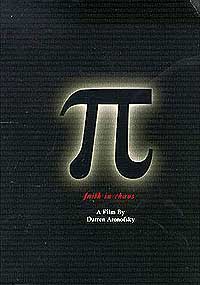
Few recent films, independent or otherwise, approach the degree of taut, visceral intensity generated by the movie π (Daniel Aronovsky, 1998). With its story of a brilliant mathematician haunted by the elusive specter of a powerful equation—an equation charged with explaining the most unpredictable patterns in our universe—π taps into the heady mixture of euphoria and paranoia that characterizes its cultural moment. One of the most intense moments in the film, though, takes place before this story even gets properly under way. The title sequence of π captures an intense synergy between aural and visual manipulation: as the movie begins, a nebulous, sustained texture provides a musical extension of the mute signifier “π” which is presented to us in its enigmatic Greek spelling. Through this lens, the concept of pi seems to take on a quality of abstraction, as something that can be labeled by a single, opaque symbol. As the tentative first beats of the theme’s breakbeat groove come in, however, the true significance of “pi” becomes fleshed out: firstly through the 3.14 that constitutes the layperson’s understanding of pi, then in terms of the infinite string of digits that make up the larger totality of this irrational number. The visual representation of this string is immensely powerful, as the digits are scrolled upwards far too quickly for the viewer to grasp.
But it is the music accompanying this montage that accounts for its unique cinematic force. [View opening credits] The drum and bass grooves that are used here lend a sense of embodiment to this montage: in the same manner that the mesmerizing flow of digits dramatizes our inability to bring pi within the bounds of cognition, the grooves of drum and bass present us with a physical impossibility. The assemblage of beats that can be preprogrammed ahead of time into sequencing programs or drum machines—that is, can be comprehended in the abstract, through the manipulation of reason—take on a superhuman quality when they are realized in real time.1 In other words, whether or not a drummer is genuinely capable of reproducing the intricate polyrhythms of drum and bass, this realization by a machine gestures towards the infinite and empowers us by acknowledging that, through the help of the drum machine, a musician could appear on the threshold of the sublime.2
The presence of this technological sublime within the aesthetic of drum and bass situates this music within a larger constellation of social concerns. As I hope to demonstrate, the specific coincidence of elements that we find in many drum and bass tracks—the coexistence of a volatile rhythmic framework, an affect of cyborg artificiality, and the traumatic impact of the sublime – lend them a prophetic quality in the face of recent events. In order to understand the context within which drum and bass emerged, I will situate this music in relation to recent discourses surrounding the cyborg, the emergence of rave culture, and the basic history and aesthetic sensibility of the music, using Photek’s track “Ni-ten-ichi-ryu (Two Swords Technique)” as a focal point for my broader discussion. Although this immediate context provides a sense of how drum and bass resonated with a community of listeners in the mid-1990s, I would also like to argue for the continuing relevance of this music’s affective qualities in the early years of the new millenium, at a point well beyond the initial vogue for this genre. To this end, the latter part of my discussion will take up the relevance of this genre’s representation of the sublime within our contemporary culture of trauma.


The visual and aural components of the opening montage from π are powerful in that they represent our historical moment through the device of the cyborg – the entity that ensues when the human and the machine merge. If we tend to envision the cyborg as the fantastical creature of Terminator, Robocop or Blade Runner, we should keep in mind the way in which Allucquère Rosanne Stone frames the concept of the cyborg.
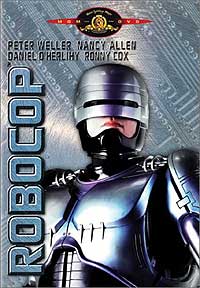
Having attended a lecture by famed astrophysicist Stephen Hawking, Stone was struck by the relationship between Hawking’s inert body—which houses a mind of extraordinary intellect—and his electronic voice box, which translates the subtle movements of his thumb into speech patterns. Stone found herself profoundly unsettled by her inability to determine where Hawking’s body ended and where the machine began. Otherwise stated, how far does Hawking’s subject extend into the device at his side? How far into Hawkings’ subjectivity does the discipline imposed by the voice box penetrate? (4–5)3

Seen through this lens, our own subjectivities seem deeply implicated in cyborg culture. We become cyborgs to the extent that we are continuous with the technologies that extend our grasp. We use computers to empower us, to allow us to reach beyond our sensory experience into a universe of information. Nevertheless, our consciousness is inevitably mediated and transformed through our engagement with these same machines. Both the outward and inward movements involved in this exchange have huge ramifications for our culture during a moment in history where such technologies have never been more powerful. In the movie π, Max Cohen establishes a partnership with his computer, Euclides, with the intention of finding a mathematical pattern that can bear within its grasp the infinite randomness of nature. Significantly, the results of his inquiry are sought by both the followers of the Hebrew mystical practice of Kaballah, as well as a consortium of multinational corporations. The elusive pattern that torments Cohen holds the key both to spiritual salvation in the form of theName of God, and to the seemingly random fluctuation of the stock market. However, there is an inward movement as well, for the fusion of machine and mind that could potentially transform the outside world also begins to impose an onerous weight on Max himself. As Max slowly drives himself mad in his pursuit of numerical patterns, his mentor labels him as Icarus, the renegade pupil who flew too close to the sun, who attempted to achieve a perspective not afforded to human beings.
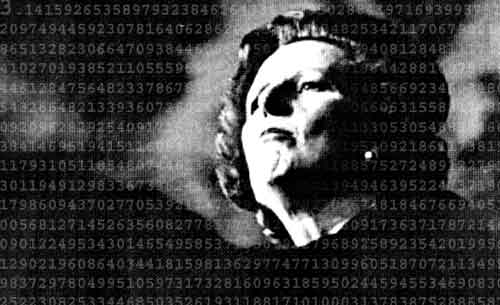
It is within this sphere of inquiry that that we can locate the relevance of the musical genre of drum and bass. Drum and bass, otherwise referred to as jungle, emerged in the early 1990s as an idiosyncratic subculture within the broader context of rave culture in the UK. The rave scene, accompanied by the music of acid house, produced an ethos of utopian togetherness often labelled as P.L.U.R. (Peace, Love, Unity, Respect), with a mind to the creation of intensely felt (if transitory) communities.Many social commentators have noted that the group consciousness and aesthetic excess of raves can be seen as a response to the deadening social atomization promoted by the policies of Conservative Prime Minister Margaret Thatcher during the 1980s.4 The jungle scene, in many quarters, contrasts dramatically with the rave scene, owing to a number of important factors. While rave culture had been appropriated by suburban white kids, jungle from the start had incorporated a sizeable contingent of Black British DJs/producers and audiences. This led in part to a renunciation of the emotional openness and demonstrativeness of rave and an adoption of a wary coolness appropriated from American hip-hop culture. In the years before its emergence into the mainstream, jungle had been disseminated through clandestine pirate radio. The tension between the excessive vigilance of the law and the pseudo-criminal activity of the pirate radio DJs also resonates in the music, which encapsulates an aura of suspicion and surveillance, as in tracks entitled “Hidden Camera,” “Mind Control,” or “Secret Life.” One consequence of this deep-seated paranoia in the drum and bass scene is that the communal sensibility of rave is not as prevalent as a kind of fierce individualism.
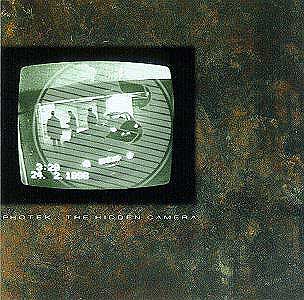
Simon Reynolds understands the possibilities of resistance within the jungle community as having much more in common with the randomness of criminality than with any sense of solidarity or mass action (250-68; 350-6). In reality, though, it should be noted that the underground economy of jungle was at some level precisely an alternative to criminality, an attempt to engage with the Thatcherite culture of entrepreneurship in good faith. In her book In the Culture Society: Art, Fashion and Popular Music, Angela McRobbie demonstrates how marginalized youth in postindustrial London began to develop new micro-economies of cultural production—fashion and graphic design, in addition to electronic music—as a means of flourishing within the gaps left behind by the decline of traditional sources of employment (25-30).
The music of the drum and bass genre in many instances bears the traces of these shifts in sensibility. While acid house—like its predecessors, Chicago “deep” house and disco—is characterized by a steady, metronomic “four-on-the-floor” pulse, the rhythmic foundation of drum and bass is much less stable. Drum and bass producers derive their grooves from what are known as “breakbeats,” the intense rhythmic patterns that hip-hop producers had also lifted from 1970s funk records. [Listen to The Winstons, “Amen, Brother”] As Tricia Rose notes with respect to mainstream American hip-hop, breakbeats are very much characterized by an aesthetic of rupture: like the breakdancing that hip-hop grooves had accompanied in the early years of the genre’s development, breakbeats vacillate between a smooth, compelling flow that pulls the listener onwards and sudden discontinuities, places where the movement unpredictably halts. Rose argues that this notion of rupture is important to understanding the appeal of rap and breakdancing in the social context from whence it derives. In inner city environments such as the South Bronx, residents do not always have the luxury of knowing that their lives will not be radically altered by interventions from outside, whether in the form of crime, evictions, police brutality or other such eventualities. The rhythmic volatility of breakbeats resonates deeply with this experience of the world, as it puts across a conception of time that foregrounds contingency and the element of surprise (39).
Unlike in hip-hop, where sampled breakbeat grooves are simply looped at a moderate tempo, drum and bass producers dissect and fragment breakbeats into their smallest components, reassemble them into intricate, asymmetrical patterns and then set them at a rapid tempo closer to that of house than that of hip-hop. The result is a groove in drum and bass that can only be described as treacherous. Unlike the reassuring redundancy of the four-on-the-floor house groove, the “breakbeat science” of drum and bass demands a certain wariness on the part of the dancer (Reynolds 252-5). [Listen to Lemon D, “Don’t Make Me Wait”] The listener cannot simply surrender to the flow of the eternal present produced in house or techno grooves, as he or she must always be cognizant of how the present is reconfigured in each moment. It is in this way that the very rhythmic foundation of drum and bass inspires a kind of “hermeneutics of suspicion.”
With the emergence of jungle to the level of mainstream consciousness, musicians and listeners responded to this music in various ways. While some ravers disenchanted with the moodiness of drum and bass returned to the hyperoptimism of hardcore acid house to fashion a movement known as “happy hardcore,” other artists, particularly LTJ Bukem and the duo known as 4Hero, introduced a gentrified version of jungle known as “intelligent drum and bass” (Reynolds 334–50). This problematic name is meant to signify a self-conscious foregrounding of the legitimately “musical” or “artistic” elements of the music. In many cases, producers smoothed over the nervous aspect of the breakbeat rhythms and situated them under harmonically rich ambient textures or sampled jazz sonorities. [Listen to LTJ Bukem, “Demon’s Theme”] In other words, the music celebrates a traditionally Eurocentric conception of what musical “intelligence” should be about: intelligent drum and bass producers stress the complexity of pitch material and the sensibility of acoustic craftsmanship over the intensity and chaotic nature of the breakbeat. In other instances, the location of “intelligence” is in the degree of intricacy with which producers parse out and manipulate the fragmented breakbeat rhythms that constitute the primary substance of drum and bass. These producers—such as Squarepusher, Luke Vibert, and others—pushed the density of syncopation and rhythmic complexity to a level of virtuosity that situated the music within a zone of abstraction, undermining its connection to the dance floor.
Yet another group of artists—many of whom had been associated with the drum and bass genre since its early manifestation as a clandestine underground culture—reacted to the smoothness and pretentiousness of “intelligent” drum and bass by fashioning a music consisting of sparse textural accompaniment and lean, fierce polyrhythms. Music by artists such as Roni Size and DJ Die, Dillinja, or Lemon D renounces the preoccupation of some “intelligent” producers with conventional, “humanist” models of musicianship and accentuates the music’s brittle artificiality. This music frequently sounds brutally technological at the very same moment that it brings to the fore the metric ambiguities and rhythmic subtleties of Afrocentric music making (Reynolds 350–53). [Listen to Roni Size, “Timestretch”] At the same time, their music affirms a “hardcore” connection to the dance-floor audience: if “intelligent” artists tend to market their music towards home us—for headphone listening or private contemplation—these latter musicians maintain a sensibility in their music that very much lends itself to dance.

Rupert Parkes, known to most listeners as Photek, has taken up a musical direction that mediates between elements of both of these strains of drum and bass that I have described here. The starkness of his tracks and the intricacy of his breakbeat manipulation are such that most of his work tends to center the listener’s awareness upon the percussive aspects of drum and bass, the sense of contingency and vicious uncertainty that breakbeats are capable of embodying. In the same manner as “intelligent” drum and bass, his work in large part circulates in the form of albums for home stereo consumption. Nevertheless, his tracks transmit a sense of immediacy that bears little in common with the more ethereal mood put across by an artist such as LTJ Bukem.
The question of where this music is consumed is an important one for the purposes of music criticism. Someone who has largely come across drum and bass as a private listener has a different perspective from that of a clubgoer, not only in the sense that those attending clubs are permitted a more proactive, bodily reaction to the music, but also in the sense that the listening experience held by a clubber—hearing the DJ mix the track seamlessly into the continuous stream of music played throughout the night—differs significantly from that held by a listener who hears the track as a discrete entity unto itself. One problem that a contextually informed music criticism would, to my mind, consider is that of how to talk about a musical experience that does not have a carefully bounded beginning and end in the manner of most of the works of the Western classical tradition.5
For example, Simon Reynolds notes with respect to drum and bass that the experience of dancing for six hours to this skittish, schizophrenic music is such that the dancer becomes wired into a situation where upheaval is the norm, where mind and body become locked into a kind of siege mentality (355). Even at the level of the individual track, the sense of immediacy brought on by the music’s constant succession of breaks and surprises completely messes with the listener’s sense of temporality. Over a longer period, the effect of this music upon the dancer or listener must be particularly acute, weirdly telescoping or truncating his or her sense of time. If we are to begin to understand how this and other genres of electronic dance music work, we must be aware, in considering individual tracks, of their potential insertion into a musical environment where the preceding and following elements in the mix will alter the meanings we discern in them. With this in mind, I would like to turn to Photek’s single entitled “Ni-Ten-Ichi-Ryu (Two Swords Technique)” with the intention of examining some of the forces that are at work in the genre of drum and bass.

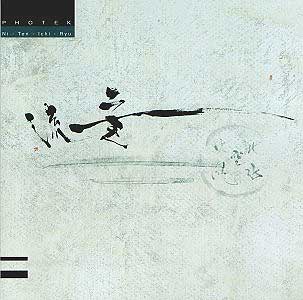
A succession of three distantly and unevenly spaced sounds reverberate in the opening seconds of this track, marking out temporal space in a manner that renders us acutely aware of the silence between each event. Time seems to take on a quality of presence, as opposed to a succession of discrete moments. [Listen to Photek, “Ni-Ten-Ichi-Ryu,” excerpt 1] If we have taken the first drumstroke that we hear as the strong downbeat, however, a new pattern of deeper drum notes emerges to undermine this temporal orientation. Until the rapid breakbeats make their entrance, we do not get a sense of how these lower beats fit into the metric conception of the work. Even the release of tension produced by the entry of the breakbeats catches the listener unawares, bursting forth from a syncopation on the second beat of the seventeenth bar, rather than its strong downbeat. Parkes’ drum programming for the breakbeats is unbelievably intricate, with the pattern almost never remaining the same for each succesive measure. He uses the relative profundities and durations of each of the drum sounds to create microcosmic cycles of tension and release that are in themselves set off against the clashing of the duelling samurai. [Listen to Photek, “Ni-Ten-Ichi-Ryu,” excerpt 2] This is music that keeps the listener on edge; even in the resounding silences, the potential for upheaval is too palpable to let us be at ease.
The upheaval of the breakbeats, however, takes place within broader spans of time, set up by the lower-pitched drum samples. This produces a hierarchical tension between the moment-to-moment immediacy of the breakbeats and the ominous, elongated silence between the sounds made by the lower-pitched drums. This rhythmic construction, combining quadruple-tempo snare beats with half-tempo bass, is fairly common in Photek’s work, and in drum and bass more generally. The more deliberate plodding of the bass notes gives the sense that higher-order machinations lie behind the rhythmic assault of the breaks. This sense of rational “form” deliberately underwriting the irrational, chaotic “content” of the breaks works to reinforce the conception of drum and bass as a synechdoche for the urban experience, articulating the unseen connection between the random violence of the street and the ordered aggressiveness of larger structures of power.
Parkes’ breakbeat constructions draw attention to a peculiar tension in drum and bass music between the human as organism and the human extension through technology. While the rhythms give the semblance of having been improvised, being radically non-redundant unlike any other genre of electronic dance music , the actual process through which these beats are matched together entails a painstaking method of pre-programming that flies in the face of the music’s seeming spontaneity. This is music that requires immense patience: Parkes has noted that with the track entitled “UFO,” for example, the breakbeat itelf took four days to construct, even before he began the process of breaking this pattern down even further and manipulating it to create the diversity of the final track’s rhythmic construction. [Listen to Photek, “UFO”] Parkes very much wants to hang on to the label of jazz musician; he sees his own music as deriving from an abstraction of the process of improvisation (Parkes). The listener or dancer, in the end, will likely respond to the music in that spirit, constantly listening for new permutations of the groove to come forward. However, the hyperkinetic rhythms of the end product can only derive from a process of alienation between the programming musician and the machine that ultimately realizes his or her conception in real time: In the same moment that the computer empowers the producer, allowing unparalleled control over the final product, the producer is wholly reliant on the computer’s power to manifest his or her musical decisions. In the moment of performance, the sequencer and sampler take over and relentlessly execute a procedure that now unfolds completely beyond the musician’s control. The rule of the machine alone comes to supplant the uneasy partnership of biology and circuitry that lends the music its cyborg complexion.
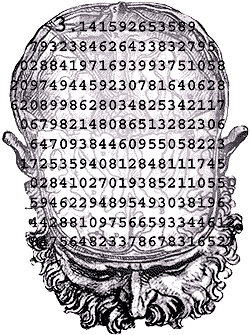
In order to more clearly illustrate why the notion of the sublime might intersect with our consideration of processes of music-making in drum and bass, it might be helpful to look at Mark Johnson’s ideas concerning what he calls image schemata. Johnson argues that the separation between mind and body that has been articulated in various ways in the Western philosophical canon is a construction that does not bear up against evidence from our experience as human beings.Rather than making a brute distinction between “concepts” or “Ideas” located in the mind and a brute, unintelligent body, Johnson argues that all of our most fundamental conceptions of the world derive from our bodily experience. As our body learns to orient itself in the world, it begins to understand other, less immediately physical notions in terms of its experiences as a body; these understandings become consolidated as bodily metaphors that Johnson refers to as “image schemata.” In locating the “metaphors we live by” as residing as much in our muscle memory as in our cerebral cortex, Johnson articulates a world-view that provides a powerful explanation for the power of music: the rhythms and melodies we hear take on so much meaning as a result of the ways that they map out against other ways that we experience time as bodies.
In this light, it becomes all the more important that we understand the ethical implications of a music that is largely disembodied in its execution and yet deeply embodied in the dancers that respond to it. The dancer—whose role it is to embody the intricate rhythms pounding forth from the speakers—has to attempt to take up a kinesthetics of the superhuman, has to bring his or her body up to the threshold of realizing the bodily implications of these radically disembodied rhythms. This, otherwise stated, comprises the sublime: the fractal-like complexity of the rhythms that the producer conceives of in the abstract have to be met by the imagination of the dancer, “imagination” in this context consisting of the dancer’s fundamentally embodied “envisioning” of the music. Insofar as rhythmic patterns form analogies of manipulating the body in time, the mechanistic virtuosity of the sequenced rhythms of drum and bass frequently results in a situation where the body is at a loss to respond to all of the music’s intricacies. In this moment of failure, the dancer’s body becomes enraptured through the ways that it has extended its capacities, and yet much of this rapture derives from the terror that it experiences in not being able to live up to the metaphors that the computer is generating.
It is important to note that there is a racial dimension to this notion of an embodied sublime. One of N. Katherine Hayles’s principal concerns in How We Became Posthuman is the question of “how information lost its body,” the complex process through which the Cartesian mind/body split has become radically reinforced in discourses about information technology and cyberculture (2). In doing so, she sets up a dichotomy between the contemporary posthuman and an earlier notion of the “human” that is based upon the hegemonic liberal humanist conception of subjecthood. However, Alexander Weheliye has taken Hayles to task for her failure to confront the specific ways in which subject positions outside of this Westernized humanism might complicate her historical narrative. For Weheliye, black subjectivity has always stood in problematic relation to that of liberal humanism, owing to the particular historical profile of a people that has often been systematically reduced to bodies, each one denied the status of personhood (21–6).
The challenge that black subjectivity poses for the posthuman manifests itself with particular intensity in the sphere of black popular music. Weheliye foregrounds the inescapable remainder of the body that resides in even the most radically synthetic forms of contemporary hip-hop and R&B, with technologies such as the vocoder or the digital sampler being used to smuggle the traces of embodied experience into the realm of the artificial (30–40). Against this backdrop, the context of the dancefloor in drum and bass magnifies this racialized dimension of an embodied posthuman in a powerful way. This music harnesses a specific tension between the suppleness of its appropriated Afrodiasporic stylistic gestures and the mechanistic coldness of its cyborg complexion. This tension carries an especially frightening expressive force, because the dance floor is a site that dramatizes the radical split between cerebral producer and embodied dancer.
The sense of anxiety that emerges from this approach to music-making—the exertion of absolute control coupled with its radical renunciation—comes to inform the aesthetic of the musical sounds. The intricacy of the breakbeats and the sense of anticipation that they create indicate one area where the cyborg collaboration of producer and sampler can create a situation of expanded consciousness reminiscent of the sublime. The ability of the musician to program patterns that would be beyond the capacities of a live drummer creates a situation where he or she has powerfully extended the body’s capacity. Moreover, the constantly shifting orientation of the beats—their seemingly inexhaustible variety—gestures towards one of the central themes of the movie π, that is, the mind’s effort to encompass conceptually the infinite randomness of the universe. However, in the cultural context of drum and bass, this gesture towards the sublime takes on a radical new significance: the potential meaningfulness of every gesture and every silence only serves to facilitate the paranoia of the listener, the sense that dark, nameless forces are constantly at work. Seen through this lens, the technological sublime loses its idyllic aura and takes on a more sinister aspect: the infinite capacity of technology to inflict damage. Technology loses its peripheral status and becomes the motor that drives societal norms, taking on a life of its own.
This more sinister face of drum and bass—its celebration of technology’s seeming alienation from the humans that create it—can be represented through numerous strategies, and it is important to take note of the particular strategy that is employed here. Parkes is a huge Japanophile; even though he admits to never having visited the country, he has developed a fascination with the sensibilities of certain aspects of traditional Japanese culture through his training in martial arts (Parkes).6


One idea that seems to manifest itself extensively in Parkes work—particularly on this track—is his accentuation of space or silence as a palpable quality that resides between objects, gaining significance through the way those objects mark out space and time. In this instance, the discourse of Japanese aesthetic appropriation maps out against other discourses of the kind mentioned earlier: rupture, paranoia, and a suspicion of silence in a world view where the appearance of rest can never be wholly trusted.7

In short, what “Ni-Ten-Ichi-Ryu” dramatizes is the capacity for drum and bass to powerfully evoke the terrifying specter of otherness. Here, as in other Photek tracks (“UFO,” “Hidden Camera”), or in darker compositions by Ed Rush, Panacea, or others, specific musical devices—rhythmic tension, silence, unsettling textures—are harnessed in the service of placing the listener in opposition to a nameless, terrifying presence located somewhere beyond the confines of the work. [Listen to Ed Rush and Nico, “Technology” (Boymerang Remix)] For example, in “UFO” Photek superimposes samples drawn from what sounds like a documentary on U.F.O. enthusiasts tracking unidentified objects in the field (“It’s coming this way … it is definitely coming this way …”) over top of patterns of accumulating rhythmic tension and harmonic suspension. The cumulative effect is that of a musical Blair Witch Project, a composition that presents the very absence of information as a spectral otherness, looming immediately beyond the listener’s grasp.
Simon Reynolds argues that the politics of paranoia and alienation that manifest themselves in drum and basses’ darker permutations are closely aligned with problems of identification and social configuration in the late 20th century. His vision of drum and bass—particularly the subgenre techstep—as the articulation of some of the crucial sensibilities of late capitalism resonates in unsettling ways with the more dystopic possibilities that N. Katherine Hayles has envisioned with respect to the cyborg:
Identify with this marauding music, and you define yourself as predator, not prey. What you affiliate yourself to with techstep is the will-to-power of technology itself, the motor behind late capitalism as it rampages over human priorities and tears communities apart … Resistance doesn’t necessarily take the “logical” form of collective activism (unions, left-wing politics); it can be so distorted and imaginatively impoversished by the conditions of capitalism that it expresses itself as … a sort of hyperindividualistic survivalism. (Reynolds 354)
Ultimately, his statement here confronts us with what is at stake when we dance to this music. The ruptures and discontinuities in drum and bass do not allow solidarity, but confront each individual with the task of devising his or her own tactics for responding to the music’s dislocation.8 This social atomization, for Reynolds, translates into late capitalism’s appropriation of everything with which it comes into contact, including anticapitalist resistance. From this perspective, the struggle to mentally and physically encompass the technological sublime—to confront the immensity of multinational capitalism—becomes merely a struggle to keep up, to attune oneself to the thorough commodification of anything and everything.
However, Reynolds was writing in 1998, when it seemed that the social alienation accompaning late capitalism was the biggest thing we had to worry about. What seems evident now—from the vantage point of a society confronted with fear on a daily basis—is that the qualities of alienation, suspicion, and the terror of the other that permeate so many drum and bass tracks have only gained relevance as time has worn on. Moreover, even as the genre itself has faded from its mid-1990s notoriety, the prophetic tensions peculiar to drum and bass have the potential to tell us more about our cultural moment than the many contemporary sensibilities that have supplanted them. In order to make a case for the continuing relevance of drum and bass, we need to look at the music less as an iconic emblem of a specific moment of fashion and more as an ontology, a statement about what it means to experience our present moment.

In π, as I mentioned earlier, Max Cohen’s pursuit of a single, fundamental pattern underlying all natural phenomena attracts the attention of two wildly divergent groups. On the one hand, the number is sought by a consortium of multinational corporations, who wish to predict the future direction of the stock market. On the other hand, the number has piqued

the interest of a group of Jewish practitioners of the Kaballah, who seek to uncover what they feel is the “key to the messianic age.” [View scene] At first glance, this latter group seems to embody the positive, utopian alternative to a brutally instrumental use of Cohen’s work through market forces. However, the enormity of what is at stake in Cohen’s number—its sublime, limitless breadth—ultimately pushes the Jewish group to be almost as violent as the corporations in their pursuit of Cohen.
The pattern at the core of the movie π foregrounds the profound connections that bind together the sacred and the secular within the postmodern sublime. It urges us to remember that each of these bears within itself the trace of its other: behind the rational and secularized image of global capital lies an almost millenarian faith in market forces. In the same moment, many of the most intense manifestations of religiosity in our times are to a great degree driven by the profound changes currently shaping contemporary global society.9 In both instances, the breadth and velocity of the forces involved have the capacity to wreak great damage, to introduce an unprecedented violence.
Part of what we must do, then, to understand the cultural ramifications of drum and bass is to set the music within this larger context. Previous discussions of the music have concentrated upon its relevance to understanding urban postindustrial society against the backdrop of economic changes in 1990s Britain, or its role within Afrodiasporic conceptions of modernity (Reynolds; Gilbert and Pearson 79–80; Collin and Godfrey 243–66). However, the resonances of musical practices often exceed their immediate social context, and it is important to understand the ways in which the structures of feeling embodied in music can perhaps tell us things we might have initially thought beyond its purview.
As I alluded to above, the genre of drum and bass has long since passed its apogee as the “it” genre among aficionados of electronic dance music. The intense gloom of drum and bass that accompanied the British recession of the early 1990s faded as better economic times seemed to demand a music with a sunnier disposition. 2-Step or UK Garage, popular in the late 1990s, replaced the gritty samples and rhythmic treachery of drum and bass with a smoother, more slick production style and crisp, lightly syncopated drum grooves. Both drum and bass and UK Garage have since been largely overshadowed by the electroclash movement of the early millenium, with its dry, funkless grooves and retro 1980s coldness. At a superficial level, drum and bass seems to have lost its ability to speak to the immediate concerns of contemporary culture.
However, this banishment from the realm of fashion doesn’t tell the entire story about this music’s relevance. The moment of drum and bass’s emergence in the early 1990s coincides with another, broader shift in our cultural frame of reference, one that continues to affect our apprehension of the world around us. If the ominous textures and rhythmic treachery of drum and bass served as a fitting soundtrack to the uncertainties of inner-city life under Thatcherism in the recession of the early 1990s, they also accompanied the much-trumpeted global shift towards a New World Order, the emergence of an uncontested neoliberal hegemony following the collapse of the Soviet Union. At the time, many prominent figures spoke about this moment in glowing, utopian terms, with Francis Fukuyama hailing the new moment as the “end of history.”Any lingering doubts about the new social order faded from view as the late-1990s boom provided what seemed to many to be unassailable evidence of its triumph. What seems striking about the 1990s in retrospect was the tremendous uncertainty that lay underneath this utopian veneer. The dissolution of the Cold War opposition between two powers meant that, among other things, the prosperous Western states were left with no clear adversary, no definitive Other against which they might define themselves. Moreover, this collapse of the old Cold War polarities coincided with the unfettered expansion of the process of globalization, the inculcation of market principles at all levels of social experience. What continues to be unsettling about this new socioeconomic order is the moral vacuum that resides at its core: the guiding principle of the neoliberal economy is its own success, as if the efficiency of the process was a proper substitute for its ethical soundness.10
The affect that I have discussed in relation to drum and bass—its aural evocation of a spectral otherness, looming immediately beyond its confines—lends itself to the ambiguous state that characterized the world of the 1990s. Drum and bass points to a lingering doubt at the core of the new order, the sense that unforeseen consequences awaited those who would prematurely celebrate the rise of Western neoliberal hegemony. However, I would like to argue that drum and bass also prefigures the experience of those consequences themselves. What at the height of the 1990s came off as a playfully maudlin exercise in paranoia, a kind of gleeful embrace of Armeggedon, takes on a more sinister resonance from our vantage point in 2003 as we look back across the devestating events that have come to define our present moment.
Earlier in my discussion, I argued that many drum and bass musicians infuse their work with a peculiar power that results from the intersection of the technological sublime with the element of rupture. What we need to ask is, what happens when we bring the weight of the sublime behind something as potentially volatile and disruptive as this element of rupture? To my mind, the sudden brutality that manifests itself in this music prefigures the emergence of a trope that has become alarmingly pervasive in contemporary Western society over the past few years: the representation of trauma. Trauma is, in short, the experience we have of an event so violent or disturbing that our mind shuts down in the attempt to represent it; the event creates a break that ruptures our sense of the way in which the world is organized. Framed in this manner, we might say that trauma articulates the experience of the sublime—that massive, unlimited awe and terror—in the form of a single, punctuating act.
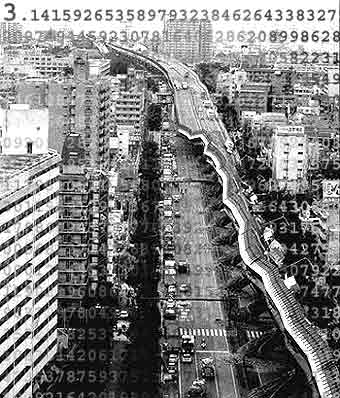
The element of trauma is nothing new in itself, of course; psychoanalysis has long understood trauma as central to the experience of the modern subject. What is new in our time is the emergence of a construction of trauma as spectacle, as located in the public domain. The capacity for the media to widely disseminate the most harrowing experiences, in all of their brutal immediacy, only draws attention to the ways in which trauma is increasingly experienced at the public level, whether the event is an earthquake in Kobe or the terrorist attack that leveled the World Trade Center in 2001. This latter example is significant here, in that another feature of many such events in our time is that they owe their violence to human agency. If contemporary technology enables a handful of men, acting alone, to destroy hundreds or thousands of human lives, the ability of contemporary media to portray such moments in vivid, unwavering realism only magnifies this violence, enabling human acts to inflict the world-shaking impact previously manifested only through acts of God.
In his recent study of the events of September 11, 2001, Slavoj Žižek argues that the spectacle surrounding this act of terror is best understood not as an intrusion of the Real within the fantastic sphere of postmodernity, but rather its inverse:
[I]t was before the WTC collapse that we lived in our reality, perceiving Third World horrors as something which was not actually part of our Social reality, as something which existed (for us) as a spectral apparition on the (TV) screen—and what happened on September 11 was that this fantasmatic screen apparition entered our reality. It is not that reality entered our image; the image entered and shattered our reality (i.e. the symbolic coordinates which determine what we experience as reality). (16)
This intrusion of the fantasy upon reality—this spectacle that ruptures our previous assumptions about the externality of the suffering world—collapses the space that had previously separated Americans from the global consequences of American hegemony. What is most unsettling about this collapse is that it reveals how the Other—the elusive adversary that has, at long last, been revealed to us—is actually internal to the broader dynamic that Western interests have set in motion. The same mujahadeen that the U.S. sponsored in the late 1970 as anti-Soviet “freedom fighters” have now turned against us, and yet they remain part of us in a fundamental way. Žižek identifies them as an instance of the excess of U.S. state power, the necessary outcome of that power’s intervention abroad. Moreover, this dynamic is in no way restricted to military power, but also manifests itself within the broader cultural dynamic of neoliberalism. The so-called Free Trade Zones found throughout Asia and Latin America, with their factories exploiting cheap, unprotected labor, also manifest themselves as the necessary “concrete” excess of the postmodern information economy.

The intricate relationship between postmodernity and its vicious underbelly becomes particularly apparent when we look at a text such as Bret Easton Ellis’ 1999 book, Glamorama. In many ways, this work prophetically situates terror as contiguous with or even internal to postmodern culture. It prefigures the horrific spectacle of an act of terror manifesting itself as the return of the repressed, the “blowback” resulting from postmodern excess. In doing so, Glamorama also dramatically envisions the traumatic suspension of the Real that accompanies the moment of terror, the violent cut that ruptures our sense of reality. It is this representation of trauma that I will set in relation to the ontology of rupture central to the aesthetic of drum and bass.
The protagonist of Glamorama, Victor Ward, is a New York model and socialite whose caustic cynicism is only rivalled by his absolute reverence for the cult of celebrity. Halfway through the book, an anonymous agent diverts Victor from his work in opening a trendy nightclub, in order to send him to find a colleague modelling in London. Upon locating her, Victor finds himself among an uber-glamorous circle of models all at the apex of stardom.
It is therefore all the more unsettling when Victor suddenly stumbles upon these same models engaging in the systematic torture and murder of a teenager who turns out to be the son of a Korean diplomat. From this moment on—this shocking act, unprecedented in the narrative—the protagonist experiences the detached, noncommital moral relativity of the world of fashion and celebrities in lockstep with the randomness of terrorism. The two, in fact, come to seem integrally related: it is precisely the fact that postmodern culture enables signifiers to float free of ethical or material constraints that guarantees the moral abyss out of which these acts of terror emerge.
We should not shrink from the outlandish conclusions about postmodern society that Ellis presents in his novel. Ellis presents the supermodels’ acts of terror as internal to Western society, as acts perpetrated by those located at the center of Western culture. It may be tempting to create a clear distinction between Ellis’s fictional acts and the horrific acts of terror that have been unleashed recently in Istanbul, Bali, and New York, acts attributed to a group, Al-Quaida, that is often situated in opposition to Western culture.11 However, this kind of thinking may be anachronistic. Michael Hardt and Antonio Negri suggest in their recent work Empire that there may no longer be an “outside” to the hegemonic influence of capital, that the entirety of global society may be subsumed under the diffuse network system that they refer to as “Empire.” By this logic, fundamentalist Islam cannot be seen as some archaic holdover from the seventh century, but is itself a dynamic bound up with the exigencies of late-20th-century culture.12 If Ellis’s book does not anticipate the specific source of the real-life attacks, it implicates postmodernity in the emergence of contemporary terror in a highly unsettling fashion.
Music organizes time, enabling humans to experience even the most radical occurences of temporal rupture as embodied feeling, and it is in this sense that I see drum and bass responding to the kind of cultural moment depicted in a narrative such as Glamorama. As an example of how such sensibilities manifest themselves in the practice of drum and bass, I would like to briefly take a look at the track “This is Los Angeles,” produced by the UK producer Lemon D. The track opens innocently enough, with a steady if rapid breakbeat groove. Lemon D eventually layers in a looped melodic sample that combines the wa-wa guitar and synth typical of an early-1970s funk record. This element—which is recognizable as the kind of G-funk reference we might hear in an old Ice Cube tune—is punctuated with an ominous sample of Tom Brokaw intoning, “This is Los Angeles, gang capital of the nation,” a sample culled from his 1992 coverage of the Rodney King riots. Thus far, Lemon D is giving us a relatively stable, if unsettling dance track.
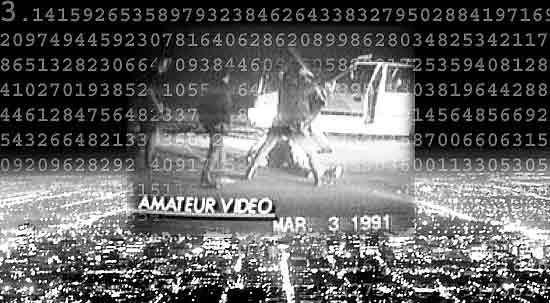
It is only after this groove is well-established that he introduces a gesture of sufficient power to break this narrative wide open. In an unprecedented move, Lemon D suddenly drops the melodic layers, leaving us with an ominous drum roll that builds as the sound of circling police helicopters looms overhead. As the drum roll is cresting, we hear Brokaw asking in a paternalistic tone, “let’s see if there’s anything that can be done about all of this.” The ensuing sub-bass drop punctuates the musical texture with a forcefulness that is at once thrilling and terrifying. It is a gesture that resembles nothing that we have encountered thus far in the track: even the drum roll leading up to it, with its clear trajectory, does not anticipate the sheer overwhelming volume of these bass drops. It is this kind of moment that most insistently links drum and bass to the idea of the sublime, and that most powerfully reveals the element of terror implicit within the sublime. [Listen to Lemon D, “This is Los Angeles”] One of the most effective aspects of electronic music is that the technology used to produce it allows artists to explore the most extreme reaches of frequency and intensity. This is a capacity that drum and bass artists such as Lemon D, Dillinja, Ed Rush, Optical and others harness in the service of a disturbing level of sonic violence, an aural analogue of the destructive power of contemporary technology.
Lemon D channels the explosive violence released in the sub-bass gesture into the breakbeat that follows, cutting and splicing this sampled groove in such a way that the loud snare fragments almost completely undermine our sense of a steady 4/4 beat. Alongside the brutal impact of the sub-bass accents, the ricocheting snares have the effect of temporally ripping the ground out from under us. It is only after extended listening that we begin to see patterns emerge: the bass notes occur at regular intervals, giving us a scaffolding for what seems like the spontaneously improvised turbulence of the sampled snare fragments. We begin to see that there is in fact a broader, systemic permanence underlying this turbulence.
The percussive impact of this climactic moment in “This is Los Angeles” couldn’t be clearer. However, the implied source of this violence is much more ambiguous: what is this sonic fury supposed to represent? The cops that beat Rodney King? The uprising that followed those cops’ exoneration? The crackdown on gang violence? Tom Brokaw himself? On the one hand, the rigorous, gridlike framework that organizes these gestures suggests the top-down imposition of power that characterizes the state. However, the exuberant polyrhythmic density of this new section, coupled with its basis in sampled funk breakbeats and the “Jeep beats” of the bass drops, suggests that African-Americans themselves are being placed at the center of Lemon D’s narrative. By this reckoning, the musical surge midway through “This is Los Angeles” could be interpreted as the aural analogue to black insurgency. In any event, the ambiguity of this gesture reveals something of the unsettling power of drum and bass: Lemon D strips away all external, semantic reference points—G-funk keyboards, sampled helicopters, television announcers—concentrating the musical energy in a gesture that eschews referants in favor of violence itself, the radical ontology of rupture expressed in aural form.
Situated within the broader historical context, Lemon D—a UK producer, working on this track in 1995—is responding to a specific moment in postindustrial life, experienced perhaps most visibly in a community such as South Central L.A., but in fact not unrelated to similar social trends in Thatcher-era working-class London. The narrative of the Rodney King disturbances articulates broader lessons for late capitalist culture. The weight of the state, in the form of the LAPD, being brought down on South Central in a frenzy of military strength that could only be labeled sublime had the unanticipated effect of generating a widespread social upheaval that would eventually result in a broader moment of cultural trauma. The undertone of menace that pervades Lemon D’s “This is Los Angeles,” consummated in its thundering moment of rupture, articulates the inevitable consequences of the society of affluence, a society that is prepared to sublimate its social inequities in order to sustain the affluence of the few. The purpose of drum and bass is to make such systemic upheavals embodied as predictable, even in their radical unpredictability; this music urges us to be vigilant in the face of the constant possibility of danger.
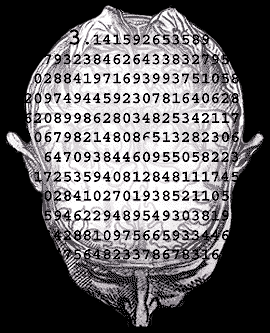
The defensive postindustrial posture of “This is Los Angeles” also gestures towards a broader context for this music, one grounded in the Afrodiasporic nexus that Paul Gilroy refers to as the Black Atlantic. In the same moment that the track foregrounds the immediate crisis of the L.A. uprisings, it implicitly draws a connection back to its own East London context, highlighting the commonalties that link black communities in post-Reagan L.A. to black and working class communities in post-Thatcher London. Lemon D, a black British producer, is taking up a genre that sits at the crossroads of American hip-hop, British techno (a genre imported from urban Detroit), and the Jamaican sound system culture that Caribbean immigrants brought to cities such as Bristol and London in the postwar period. This music of drum and bass draws its energy from a notion of culture grounded, if anywhere, in mobility, migration and dynamism, in “routes” rather than “roots.”
Paul Gilroy has argued that the experience of migration has an especially powerful cultural resonance in Afrodiasporic cultures as a result of the networks of movement and travel that have constituted the societies of the black Atlantic since at least the beginning of slavery several centuries ago. For Gilroy, every voluntary movement taken on by Afrodiasporic peoples bears the traces of earlier movements that were in many instances wholly involuntary: much of the social identity of black populations in the wake of modernity has been constituted by the cultural memory of the slave ships, of the traumatic events of the Middle Passage. Against this backdrop, drum and bass producers, DJs and dancers, all of them participants in cultures constituted through migration, can be seen as intensifying aesthetic impulses—rupture, break, discontinuity—which gained a considerable part of their cultural resonance from this legacy of upheaval. The fury and vertiginous instability that courses through “This is Los Angeles” resonates well beyond the track’s immediate subject, binding together aggrieved communities of color across national and historical boundaries.
However, if “This is Los Angeles” dramatizes the impact of a mass insurgency, a spontaneous uprising against the abuse of state power, its unprecedented fury gestures towards the more unsettling situation in which we now find ourselves: devastating acts against the state need no longer be based in mass action. Drum and bass anticipates the paranoiac worldview necessary in the age of asymmetrical warfare, an age in which our own technological infrastructure is turned against us. Earlier in my discussion, I argued that the contemporary technologies of music production—MIDI sequencing, digital sampling, and so forth—take up the cyborg relation between body and machine, where such technologies serve as extensions of individual subjectivity. One of the more disturbing aspects of this relationship in the context of electronic music is that a lone producer, armed only with a modest bedroom studio, is capable of unleashing a sonic tempest completely out of proportion to his or her own scale as an individual. When a particularly extreme artist such as Ed Rush claims that he wants to “hurt people with my beats,” he is articulating the fundamental asymmetry of power that exists between the producer and the dancefloor. In the dance music environment, the consequences of this asymmetry may be little more than hearing loss and a certain residual jittery paranoia. Nevertheless, this asymmetry translates into an aural analogue of something far more sinister. It emulates the devastating—and largely inscrutable—process that manifests itself within the sublime act of terror.

It is worth considering what this dimension of electronic music production—its metaphoric proximity to asymmetrical warfare—might suggest about the relationship between drum and bass and a utopian/dystopian imaginary. In his conclusion to the well-known essay “The Work of Art in the Age of Mechanical Reproduction,” Walter Benjamin takes note of the obscene pleasure that 20th-century humanity finds in the spectacle of destruction or atrocity:
Mankind, which in Homer’s time was an object of contemplation for the Olympic gods, now is one for itself. Its self-alienation has reached such a degree that it can experience its own destruction as an aesthetic pleasure of the first order. This is the situation of politics which Fascism is rendering aesthetic. (242)
For Benjamin, this aestheticization of destruction is not simply an isolated phenomenon, but participates in the political economy that sustains the status quo. Earlier on, he writes,
Only war makes it possible to mobilize all of today’s technical resources while maintaining the property system. … If the natural utilization of productive forces is impeded by the property system, the increase in technical devices, in speed, and in the sources of energy will press for an unnatural utilization, and this is found in war. (241–2)
If capitalism generates technological innovations that might ultimately encourage a collective vision of utopia, undermining the property system, the device of war enables this excess in productive forces to be taken up in the service of sustaining this system. The aestheticization of violence participates in this economy at a symbolic level, offering up the spectacle of destruction as a distraction from existing inequities. In this sense, we might see the explosive musical force of drum and bass—its aesthetic codification of traumatic rupture and militaristic individualism—as a device that participates in our culture’s postponement of a critical engagement with late capitalism.13
However, also implicit in Benjamin’s formulation is a vision of technology as a repository of utopian hope. The same productive excess that manifests itself in spectacles of destruction also gestures towards the utopian promise of technical innovation itself. As an aesthetic mobilization of this productive excess, the bleak wakeup call of drum and bass bears within itself the possibility of a more utopian world. In the expansion of the mind (and body) that derives from the experience of the sublime lies the potential for additional strength, for critical awareness. In its pairing of mechanistic rigor with neurotic, fragmentary rhythms, the works of this genre constitute their own self-critique. In the end, the hermeneutics of suspicion inspired by drum and bass might help to foster a conscious world-view in which we are ready for the contingencies to come.
Works Cited
Benjamin, Walter. “The Work of Art in the Age of Mechanical Reproduction,” in Illuminations, Hannah Arendt, ed. New York: Schocken Books, 1968.
Carmical, Kent. “In Studio: Gear Shift.” URB June 2003: 114–115.
Collin, Matthew, and John Godfrey. Altered State: The Story of Ecstasy Culture and Acid House. 2nd edition. London: Serpent’s Tail, 1998.
Comaroff, Jean, and John L. Comaroff, eds., Millenial Capitalism and the Culture of Neoliberalism. Durham: Duke UP, 2001
Ellis, Bret Easton. Glamorama. New York: Vintage, 1998.
Fukuyama, Francis. The End of History and the Last Man. New York: Free Press, 1992.
Gilbert, Jeremy, and Ewan Pearson, Discographies: Dance Music, Culture, and the Politics of Sound. London: Routledge, 1999.
Gilroy, Paul. The Black Atlantic: Modernity and Double Consciousness. 1993. Cambridge: Harvard UP, 1995.
Gray, Chris Hables, comp. The Cyborg Handbook. New York: Routledge, 1995.
Haraway, Donna. Simians, Cyborgs, and Women: The Reinvention of Nature. New York: Routledge, 1985.
Hardt, Michael and Antonio Negri. Empire. Cambridge: Harvard UP, 2001.
Hayles, N. Katherine. How We Became Posthuman: Virtual Bodies in Cybernetics, Literature, and Informatics. Chicago: University of Chicago Press, 1999.
Hoffman, Bruce. “The Leadership Secrets of Osama bin Laden: The Terrorist as CEO.” Atlantic Monthly Apr. 2003:26-27.
Huntington, Samuel P. The Clash of Civilizations and the Remaking of World Order. New York: Simon and Schuster, 1998.
Jameson, Fredric. Postmodernism: Or, The Cultural Logic of Late Capitalism. Durham: Duke UP, 1991.
Johnson, Mark. The Body in the Mind: The Bodily Basis of Meaning, Imagination, and Reason. Chicago: University of Chicago Press, 1987.
McRobbie, Angela. In the Culture Society: Art, Fashion and Popular Music. London: Routledge, 1999.
Parkes, Rupert. <www.drumandbass.co.uk/features/photek.html>. (Site is no longer online.)
Plant, Sadie. Zeros + Ones: Digital Women and the New Technoculture. New York: Doubleday, 1997.
Portnoy, Sean. “Software Reviews: Pure Reason.” Grooves: Experimental Electronic Music Magazine 6 (2001): 50–51.
Powers, John. “Welcome to the Concrete Jungle: John Powers in the land of no culture, surreal Cancún.” LA Weekly. 19–25 Sept. 2003.<http://www.laweekly.com/ink/03/44/news-powers.php>
Reynolds, Simon. Generation Ecstasy: Into the World of Techno and Rave Culture. Boston: Little, Brown, and Company, 1998.
Rose, Tricia. Black Noise: Rap Music and Black Culture in Contemporary America. Middletown: Wesleyan UP, 1994.
Small, Christopher. Musicking: The Meanings of Performing and Listening. Middleton, CT: Wesleyan UP, 1998.
Stone, Alluquère Rosanne. The War of Desire and Technology at the Close of the Mechanical Age. Cambridge: MIT Press, 1995.
Theberge, Paul. Any Sound You Can Imagine: Making Music/Consuming Technology. Middleton, CT: Wesleyan UP, 1995.
Weheliye, Alexander G. “’Feenin’: Posthuman Voices in Contemporary Black Popular Music.” Social Text 20.2 (2002): 21–47.
Williams, Raymond. Television: Technology and Cultural Form. 1975. New York: Routledge, 2003.
Žižek, Slavoj. Welcome to the Desert of the Real!: Five Essays on September 11 and Related Dates. London: Verso, 2002.
- Depending upon when a particular track was put together, it would have been dependent upon one of a number of different musical technologies. In the late 1980s and early 1990s, producers would have had to rely upon combinations of sound sources from external hardware—drum machines, synthesizers, and digital samplers—and sequencing software that arranges these sound sources into the structure of the track. More recently, the development of faster CPUs and memory expansion has allowed sound material to be saved straight to hard disk, and powerful new interfaces allow producers to manipulate these audio sources in a variety of different ways. Consequently, a lot of current electronic music production and live performance can be enacted using a laptop computer as a stand-alone device. For discussions of the implications of these technologies, see Theberge and Reynolds. For reviews of more contemporary audio software, see Carmical and Portnoy. ↩
- Fredric Jameson, among others, has articulated a notion of what might be called the “technological sublime.” If the concept of the sublime had previously been used to articulate the inadequacy that the human subject felt upon trying to represent Nature, the postmodern condition—in which Nature itself has been effaced—has produced a sense of the sublime in which humans find themselves up against their own creations, and find themselves wanting (34–35). ↩
- Donna Haraway’s writings on the notion of the cyborg constitute the most influential discussions of this concept. In her 1985 essay “A Manifesto for Cyborgs: Science, Technology, and Socialist Feminism in the 1980s,” Haraway situates the merging of human and machine that constitutes the cyborg at the center of questions of cultural politics: in the same moment that the cyborg embodies patriarchal, late capitalist ideals of total mechanistic control over a diverse world, it also is about the celebration of partial subjectivities that are not afraid to cede their autonomy, to merge with the machine (Haraway). The collection entitled The Cyborg Handbook, compiled by Chris Hables Gray, assembles a huge array of materials, encompassing post-Haraway reflections upon the cultural politics of the cyborg, fiction by cyberpunk writers, scientific documents advocating the use of cybernetic technology and interviews with the pioneers of cyborg terminology. For other recent scholarship on cyborg culture, see Hayles and Plant. ↩
- As a comparison, see Simon Reynolds’ discussion of the emergence of the rave scene (56–111). ↩
- This issue has been taken up elsewhere in musical and non-musical contexts alike. Christopher Small, for example, presents analyses of performance situations as social situations, stepping outside of the reifying confines of atomized musical “works.” Raymond Williams’s analysis of television takes a similar approach, as he foregrounds the element of flow that holds compartmentalized TV programs together over the course of a viewing. ↩
- This linking of martial arts and cyberculture is very pervasive in our cultural moment; perhaps the most obvious connection here would be the Wachowski brothers movie series based around The Matrix. In that movie, Keanu Reeves’s character, “Neo,” can literally download martial arts maneuvers into his brain. ↩
- Moreover, the citation of East Asian cultural references is particularly prevalent in some quarters of hip-hop, such as that put forth by the Wu-Tang Clan, where alienation and a politics of suspicion are held in tension with an empathy for other marginalized populations in the U.S. and non-white cultures abroad. In Parkes’s case, what is likely enacted here is a mapping out of a newer, unfamiliar tension (that of the implications of information technology) against the signifiers of an older, more familiar one, that of exoticism: in citing a Japanese aesthetic, Parkes potentially gestures towards the mixture of pleasure and fear that Western listeners derive from representations of the Yellow Peril, or of the lingering suspicion that looming, conspiratorial forces were at work behind the pre-bubble economic boom in Japan in the 1980s. ↩
- We find this same survivalist posture enacted in the sampled textual interlude of “Ni-Ten-Ichi-Ryu,” a long segment from a samurai movie. Over a plaintive phrase of shakuhachi music, with swords clanging in the background, the samurai master intones a solemn declaration that weds the appreciation of martial skill with a call to individualism: “Everyone is dead. The one who is able to perform this form of killing is a skillful samurai. Understand? The only one who possesses this skill is you.” Here, Parkes is implicitly setting up the analogy of DJ as master and the dance floor as training ground for the survival of twenty-first century life. (I am grateful to an anonymous reader for bringing this element to my attention, and thanks to Mika Yoshitake for providing a translation from the Japanese.) ↩
- For a discussion of this millenarian thread in contemporary global capitalism, see Comaroff and Comaroff. ↩
- It was only as a result of the new visibility of the “fair trade” or anti-globalization movement at the 1999 WTO meeting in Seattle that we have begun to see even the slightest lip service paid to the notion that globalization must be grounded in social justice. At subsequent WTO meetings and economic summits, world leaders have been careful to assert their support for fair labor laws and environmental regulations, even while they maintain a pointedly secretive and antidemocratic process for negotiations. For a discussion of these issues as they played out during a recent summit in Cancún, see Powers. ↩
- For example, in Samuel P. Huntington’s influential text Islam is positioned as the absolute antipode to “the West,” its values ostensibly the product of a process completely distinct from the evolution of Western culture. ↩
- A fair bit of evidence points to this interpretation. It is possible to interpret a number of events in the Islam world since the Iranian Islamic Revolution as some fundamental response to modernization, Western imperialism, or the encroachment of globalization. The clerical fatwa against Salmun Rushdie, the two Palestinian intifadas, the rise of the Taliban—each of these seems as driven by supposedly “external” events as through any internal logic. Slavoj Žižek argues that, far from constituting the threat of an unrelated, external “Other” to the West, Islamist terror may be wholly intrinsic to late capitalism: “…are not ‘international terrorist organizations’ the obscene double of the big multinational corporations – the ultimate rhizomatic machine, omnipresent, albeit with no clear territorial base? Are they not the form in which nationalist or religious ‘fundamentalism’ accommodated itself to global capitalism?” (38). Indeed, this form is often quite recognizable to us. A recent article by Bruce Hoffman in the Atlantic Monthly argues that Osama bin Laden’s operational methods may most closely resemble the dynamics of venture capital: bin Laden doesn’t dictate projects from above, but rather gives the go-ahead to projects that are proposed to him, in the manner of an investment firm “green-lighting” a new Internet startup. ↩
- I am grateful to an anonymous reader for drawing attention to this element of Benjamin’s argument. ↩
